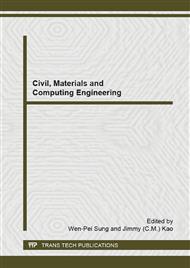p.799
p.802
p.807
p.812
p.816
p.820
p.824
p.828
p.833
Computer Network Attack Modeling and Network Attack Graph Study
Abstract:
With the development of computer network and rapid popularity of Internet, network information security has become the focus of safeguarding national security and social stability. In the network security event, the hacker often can’t successfully intrude into the network by means of a single host / services hacker. With the help of various kinds of "vulnerability" generated bydifferent relationship existing in multiple point multiple host, the hacker can achieve the purpose of network intrusion. Therefore one important aspect of network security is after obtaining the vulnerability of the network information, considering a combination of multiple exploits and analyzing the attack path of network penetration attacks that the attacker may take.
Info:
Periodical:
Pages:
816-819
Citation:
Online since:
December 2014
Authors:
Price:
Сopyright:
© 2015 Trans Tech Publications Ltd. All Rights Reserved
Share:
Citation:


